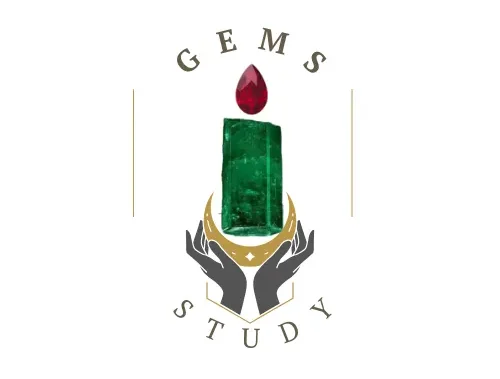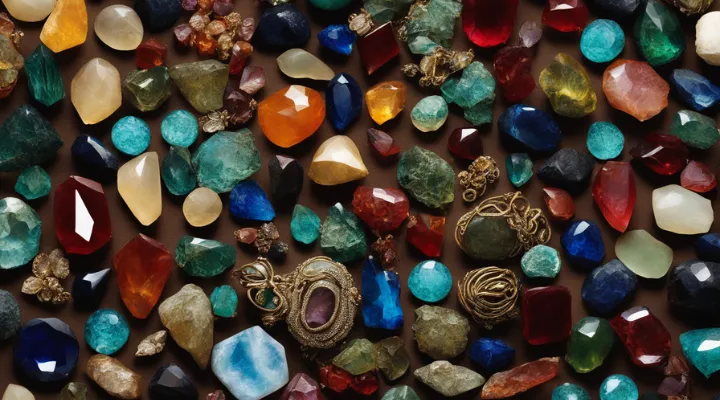Birthstones are gemstones that associate with each month of the year, the gemstone for the month of each person’s birth. It’s thought these stones might carry properties that are in alignment with specific traits of people born during a given period. The stones were originally associated with the zodiac and are also mostly the same birthstones associated with the calendar months. Another great thing about birthstones is that, as they are associated with a calendar month, they afford people a “story” to fall back on when purchasing birthstone jewelry for themselves or as a present.
The Ancient Origins of Birthstones
Ancient texts are some of the earliest mentions of birthstones—particularly in ancient Babylonian culture, where gemstones were linked to the twelve signs of the zodiac. This astrological connection influenced the selection of specific stones and wore them to enhance their own traits—their fortunes. The Babylonians, for instance, associated sapphire with Taurus, symbolizing wisdom and protection.

The Romans also associated a gem with each month, and it is from this civilization that we first see a gemstone being dedicated to the month in which a person was born. For example, an amethyst was adopted for February, turquoise in January, and a garnet for December. These people were the first to consider the concept of your birth month’s “stone” as a good-luck charm—a method that brings you good health.
Birthstones in Different Cultures
Birthstones have ancient roots. Some of the earliest mentions of these stones were associated with the breastplate of the Jewish high priest, as described in the book of Exodus, managed by Moses, subsequently placed into the Ark of the Covenant along with the “Ten Commandments”. The sons of Jacob are also associated with these stones. That might make you pause a moment and consider — birthstone jewelry typically being “dainty” (“precious” etc…) — “hey, I wonder if my birthstone is suitable (from a historical perspective) as a gift or “adornment” for a man…”. Hopefully, that’s got you thinking, “I want to know more about my birthstone…”.
Modern Birthstone List
Below is a comprehensive table of modern birthstones along with their origin, traditional meanings, and significance across cultures.
| Month | Birthstone |
| January | Garnet |
| February | Amethyst |
| March | Aquamarine |
| April | Diamond |
| May | Emerald |
| June | Pearl / Alexandrite |
| July | Ruby |
| August | Peridot |
| September | Sapphire |
| October | Opal / Tourmaline |
| November | Topaz / Citrine |
| December | Turquoise / Zircon / Tanzanite |
Birthstones and Their Historical Significance
Garnet (January)
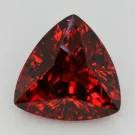
History: Garnets have been used since the Bronze Age. Ancient Egyptians believed they provided protection in the afterlife.
Cultural Significance: In Christianity, garnets symbolize Christ’s sacrifice. In Hindu culture, they represent health and prosperity.
Amethyst (February)
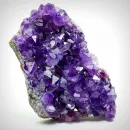
History: Revered by the Greeks and Romans, amethysts were believed to prevent drunkenness.
Cultural Significance: In Tibetan Buddhism, amethysts are used in prayer beads to aid meditation.
Aquamarine (March)

History: Ancient sailors believed aquamarine protected them during sea voyages.
Cultural Significance: In Hindu astrology, it enhances communication and reduces stress.
Diamond (April)
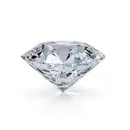
History: Diamonds have symbolized power since ancient India, where they were first mined.
Cultural Significance: Considered a symbol of eternal love in Western engagement rings and strength in Hindu tradition.
Emerald (May)
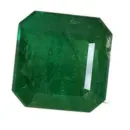
History: Cleopatra adored emeralds, and they were often worn by ancient Egyptians.
Cultural Significance: Associated with wisdom and fertility in Roman culture and prosperity in Hinduism.
Pearl / Alexandrite (June)

History: Pearls were considered tears of the gods in ancient Greek mythology.
Cultural Significance: In Chinese culture, pearls symbolize wisdom and wealth. Alexandrite, discovered in Russia, symbolizes luck and prosperity.
Ruby (July)

History: Rubies were highly valued by ancient Burmese warriors for protection in battle.
Cultural Significance: In Hinduism, they are considered “king of gems,” offering good fortune.
Peridot (August)
History: Ancient Egyptians called it the “gem of the sun.”
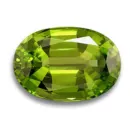
Cultural Significance: Believed to ward off evil spirits in ancient Rome and bring prosperity in Hindu culture.
Sapphire (September)

History: Medieval clergy wore sapphires to symbolize heaven.
Cultural Significance: Associated with wisdom and virtue in Western culture and spiritual enlightenment in Hinduism.
Opal / Tourmaline (October)

History: Romans believed opals contained the essence of all gemstones.
Cultural Significance: In Aboriginal Australian culture, opals are considered a gift from the rainbow creator.
Topaz / Citrine (November)
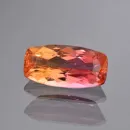
History: Ancient Greeks believed topaz gave strength. Citrine was called the “merchant’s stone” for attracting wealth.
Cultural Significance: In Hinduism, topaz promotes wisdom. Citrine is believed to balance energies in Ayurveda.
Turquoise / Zircon / Tanzanite (December)
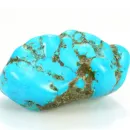
History: Turquoise was revered by Native American cultures as a sacred stone.
Cultural Significance: Tibetan traditions use turquoise for spiritual healing, while Tanzanite represents transformation and new beginnings.
Birthstones in Modern Jewelry
The journey taken from ancient to modern adaptations of birthstone jewelry is a blend of ethnocultural context and ever-changing trends in the fashion industry. In ancient times, many people believed gemstones held ‘powers’ and that these gems were heavily tied to astrology—quite a few people wore birthstone talismans rather than rings. Over time, this aesthetic translated into more traditional cuts of jewelry. In recent years, however, minimalist cuts of birthstone jewelry have become popular.

Global Perspectives on Birthstones
There are also considerable differences between traditions. Each month in the West has a birthstone that is associated with it, like garnet in January or sapphire in September. These gemstones are often thought to bring the wearer a good year filled with wealth and security. In contrast, there is very little monthly significance in the East.
Cultural Symbolism of Birthstones
Birthstones bear different significances depending on the culture in which they are found. In the West, the garnet found in January is said to provide the wearer with strong protection, a belief that can be traced back even to the time of Noah and is thought to have been one of the stones in his flood. In the East, the garnet is associated with love and passion, putting an entirely different spin on the significance of the particular stone.
